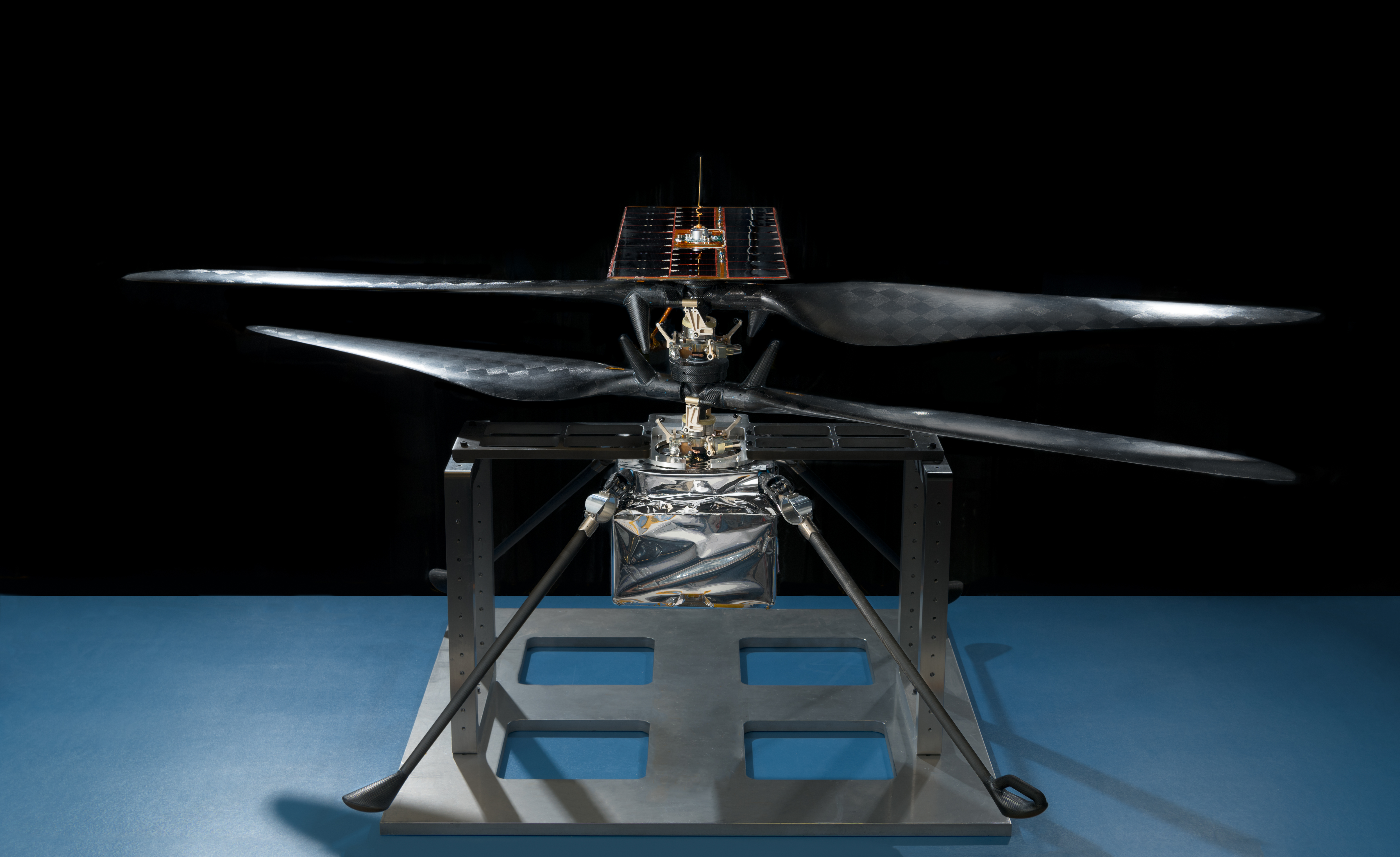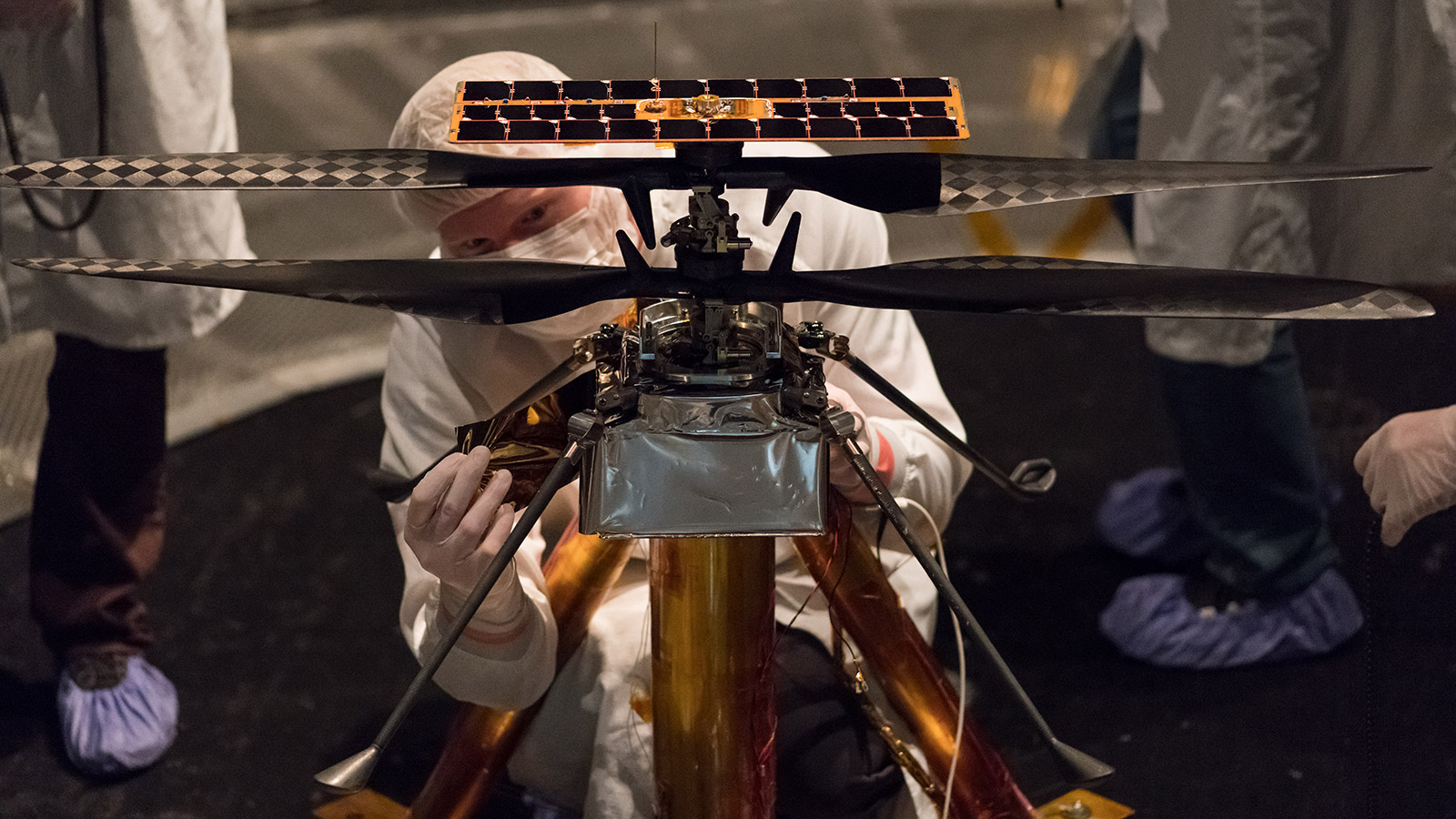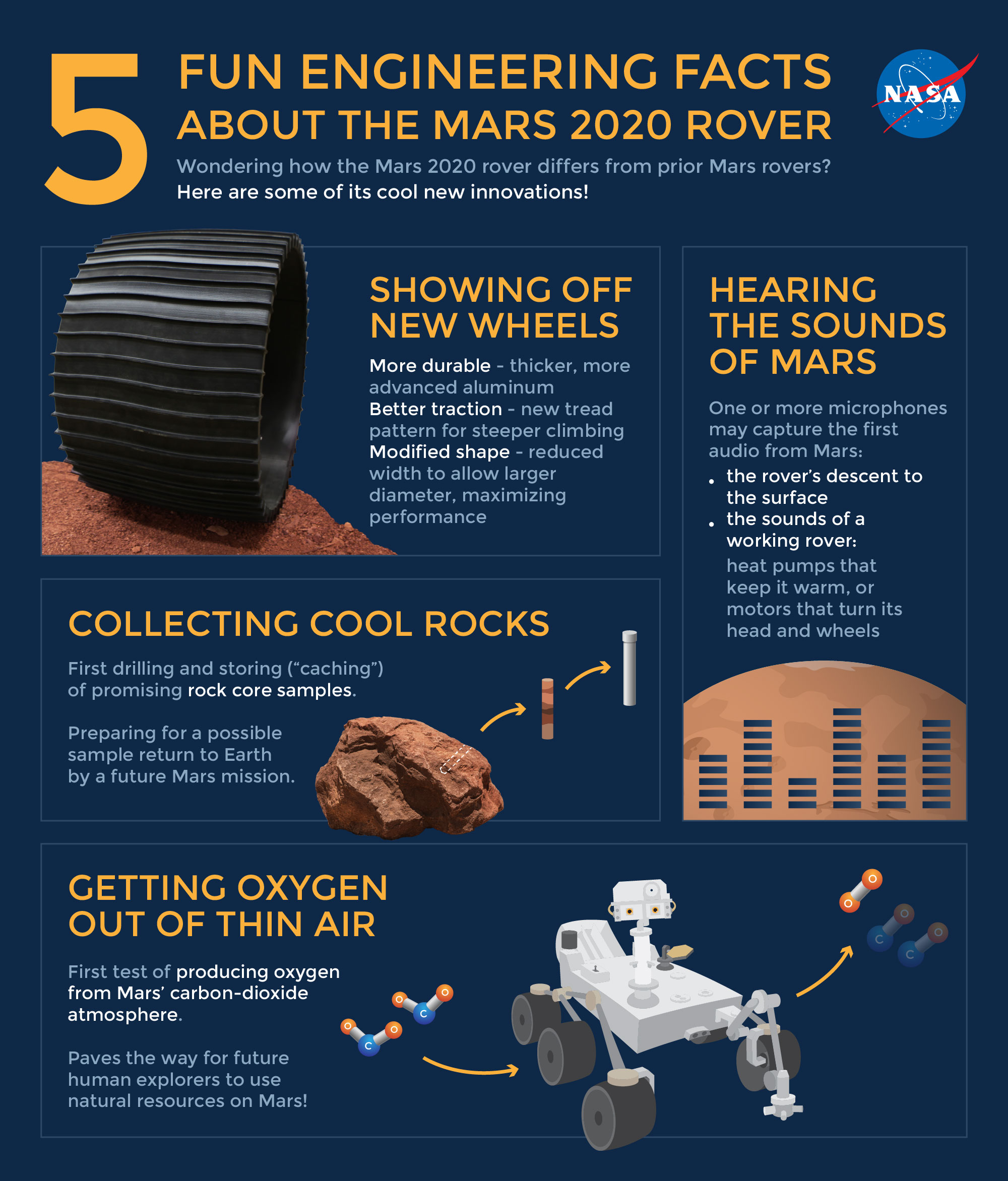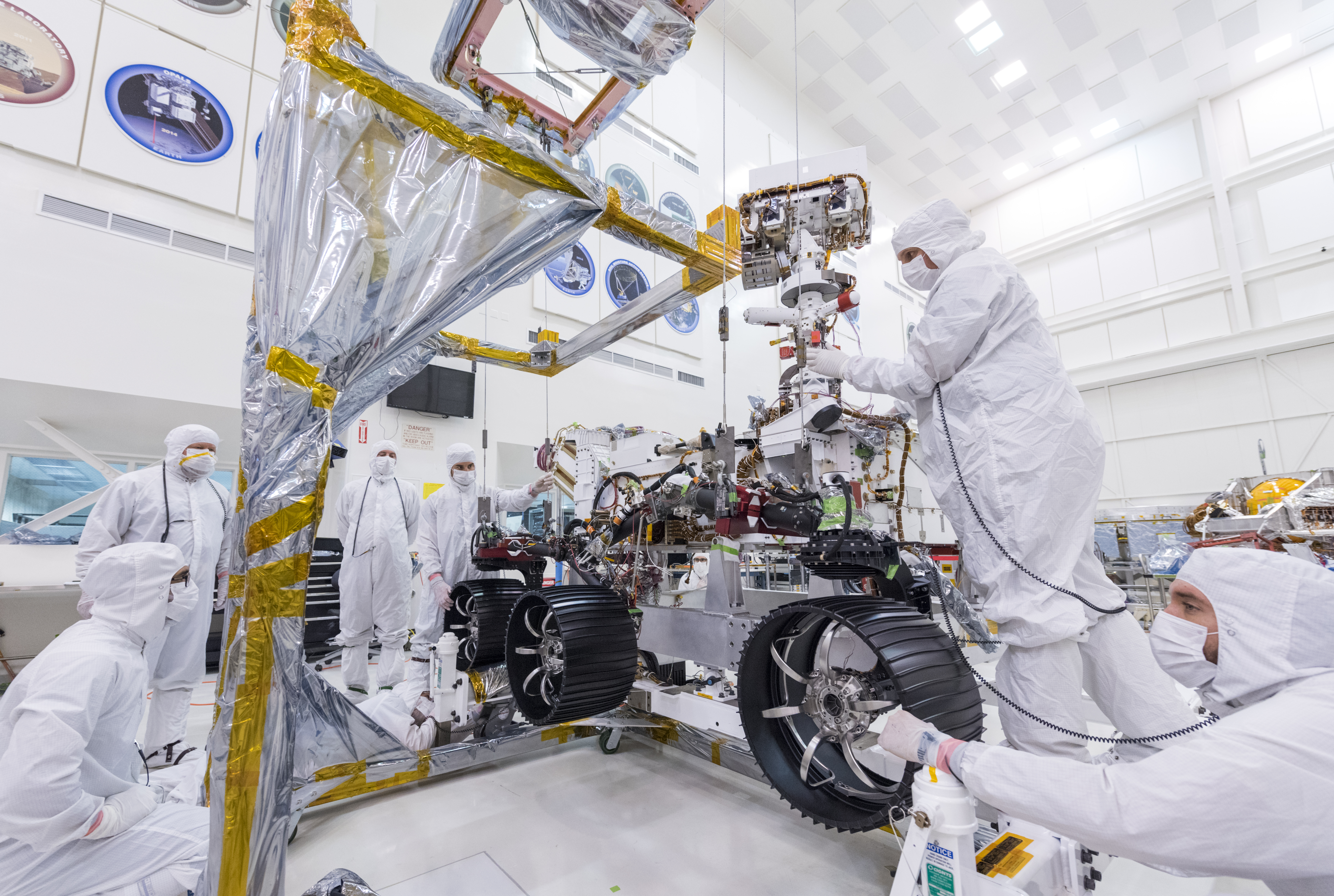
Going where no helicopter has gone before, humanity’s maiden Martian chopper has entered its final testing phase with the goal of proving the rather difficult feat that a heavier-than-air vehicle can fly in the Red Planet’s extremely thin atmosphere.
If all goes well, the Martian helicopter will be mated to the belly of NASA’s 2020 Red Planet rover in time for liftoff next July – and a history-making first ever feat of flight on Mars in July 2021.
“Nobody’s built a Mars Helicopter before, so we are continuously entering new territory,” said MiMi Aung, project manager for the Mars Helicopter at NASA’s Jet Propulsion Laboratory in Pasadena, California. “Our flight model — the actual vehicle that will travel to Mars — has recently passed several important tests.”
From January to May the team conducted flight testing with the flight model in a simulated Martian environment at JPL compatibility with the Mars Helicopter Delivery System at Lockheed Martin Space in Denver.
“In 2021, the small, autonomous helicopter will be the first vehicle in history to attempt to establish the viability of heavier-than-air vehicles flying on another planet,” says NASA.
“Its purpose is to confirm that powered flight in the tenuous Martian atmosphere (which has 1% the density of Earth’s) is possible and that it can be controlled from Earth over large interplanetary distances.”

The Mars Helicopter weighs four pounds (1.8 kilograms). It will be attached to the belly of the Mars 2020 rover during launch and the interplanetary cruise phase before deploying it onto the surface of Mars after landing.
It carries no science instruments since it is a technology demonstration experiment but will be equipped with a high resolution camera to scout the local alien terrain.
If it successfully flies on Mars the science team will use the chopper to help assess which route the rover will be routed to as it journeys across the Red Planet.

Mars 2020 will search for signs of past microbial life, characterize the planet’s climate and geology, collect samples for future return to Earth, and pave the way for human exploration of the Red Planet.
The one-ton rover (2,300 pounds, 1,000 kilograms) is nearly a copy of the Curiosity Mars Science Lab rover still operating on Mars – but with a completely new suite of science instruments and cameras, as well as the first Mars helicopter.
The Mars 2020 rover will launch atop a United Launch Alliance (ULA) Atlas V rocket from Space Launch Complex 41 at Cape Canaveral Air Force Station, Florida. The launch window opens in July 2020.
The rover and accompanying helicopter are slated to touch down at Jezero Crater on Feb. 18, 2021.

Watch NASA build the 2020 Mars rover via webcam
Thanks to a newly installed webcam, the public can watch as NASA builds its next rover launching to the Red Planet – the Mars 2020 rover – via a live, bird’s-eye view direct from clean room assembly facility at the Jet Propulsion Laboratory in Pasadena, California.
“You can watch as JPL engineers and technicians assemble and test the rover before it embarks next year on one of the most technologically challenging interplanetary missions ever designed,” said NASA.
The webcam is named Seeing 2020 and shows the construction of the Mars 2020 rover from a vantage point above the clean room – minus any audio.
Continuous live video of rover construction is available at https://mars.nasa.gov/mars2020/mission/where-is-the-rover/.
The feed is also available on YouTube with scheduled, moderated chats at http://youtube.com/NASAJPL/live.
“There is so much happening and changing in the clean room, I come here every opportunity I get,” said Mars 2020 project manager John McNamee of JPL. “It is great that we can share this part of our journey to the Red Planet with the public anytime they want.”
Mars 2020 rover is being built in High Bay 1 where the work day starts at 8 a.m. PDT (11 a.m. EDT) Mon.-Fri and will continue for many months before it is shipped to the Kennedy Space Center for final assembly and testing.
The other main components comprising the back shell, descent stage and cruise stage have already been assembled and tested.

Get your Boarding Pass for Mars
NASA is inviting the public to send their name along for the journey that begins with blastoff of the 2020 Rover in July 2020
From now until Sept. 30, you can send your name to Mars by adding it to a chip to be loaded on board for the journey.
You can sign up and obtain a souvenir boarding pass to Mars at https://go.nasa.gov/Mars2020Pass.
More than seven million people had already signed up to place their names on the chip as of June 10.



